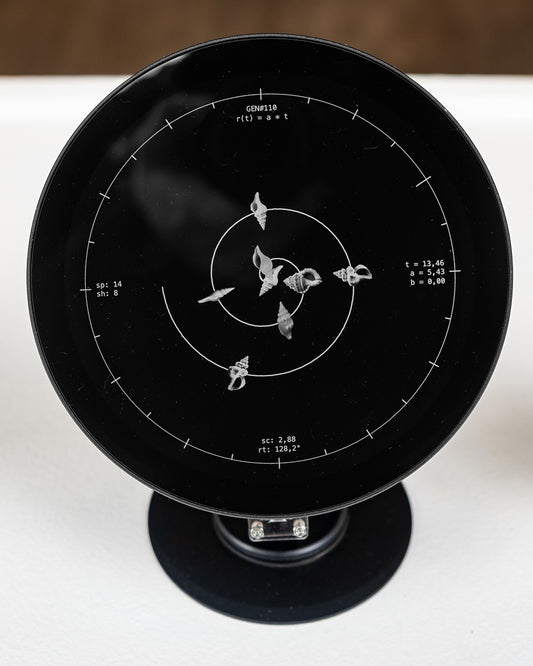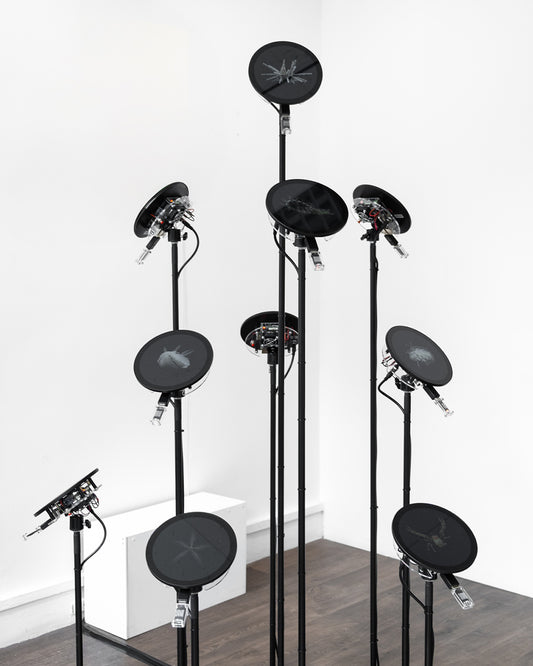> Press Release
The exhibition brings together artists who question our relationship with landscapes and their memory. Their works capture a world in transformation—natural, architectural, or mental. Using techniques such as photogrammetry and LIDAR scanning, they capture traces, tangible or buried, left by time and upheavals.
Created in the wake of the first lockdown, these works convey fragments of memory—vestiges of a landscape, an architecture, an emotion—and question our ability to preserve what is disappearing. In this dialogue between art, science, and technology, the pieces highlight traces of the past, projecting them into a future where these digital traces become living narratives.
Explorers of nature, the artists draw on scientific methods to conceive a new approach to representation: through the capture and collection of data.
Rooted in reality, these three-dimensional digital works, composed of point aggregates, convey the fragility of landscapes and their fleeting nature.
The artistic approaches converge around common themes: the memory of places, the fusion of nature and architecture, and the impact of ecological and human disruptions.
Paul Duncombe, with his Manicouagan project, captures the traces of an ancestral Innu territory marked by a major cataclysm 215 million years ago. Through LIDAR and SONAR scans, he unveils the hidden beauty of a primordial landscape. Daniel Bourgais explores the slow transformation of ruins and landscapes, where rock becomes vegetated, and earth fossilizes, engaging in a subtle dialogue between the erosion of time and the resilience of matter. Arnaud Laffond delves into the psyche with Grotte, an immersive experience that overlays the contours of a real cave with the twists and turns of a mental labyrinth, examining the links between individual memory and virtual environments.
Paul Duncombe presents a series of works born from his exploration of the Manicouagan astrobleme, on the ancestral lands of the Pessamit Innu. From the depths of the crater to the summit of the impact site’s "Ground Zero," the works derive from unique data collected at this witness site of the fourth great extinction of life. At the intersection of exploration, science, and poetry, the artist reveals the beauty of these primordial landscapes as interpreted by machines.
In his series État de ruine, Daniel Bourgais explores the fusion of nature and architecture through works capturing the evolution of a castle's ruins and a transforming landscape. Between rock becoming vegetated and earth fossilizing, the artist reveals the memory of the place, inviting contemplation of the subtle beauty of ruins while questioning our relationship with time and matter.
Arnaud Laffond presents Grotte, a project blending photogrammetry, brain scans, and virtual reality, inviting viewers to explore a mental labyrinth inspired by the isolation of confinement. It examines the connections between memory, emotion, and virtual environments. This allegory of the artist's mental space is embodied in a 3D model based on a real cave: the Balme cave in Isère, whose contours he captured using photogrammetry techniques.
By capturing the essence of these physical and symbolic territories, the artists present thought-provoking works. In these pieces, the simplicity of natural forms interacts with the growing technical sophistication of modern societies, inviting us to rethink how landscapes are represented and preserved in a perpetually changing world.



